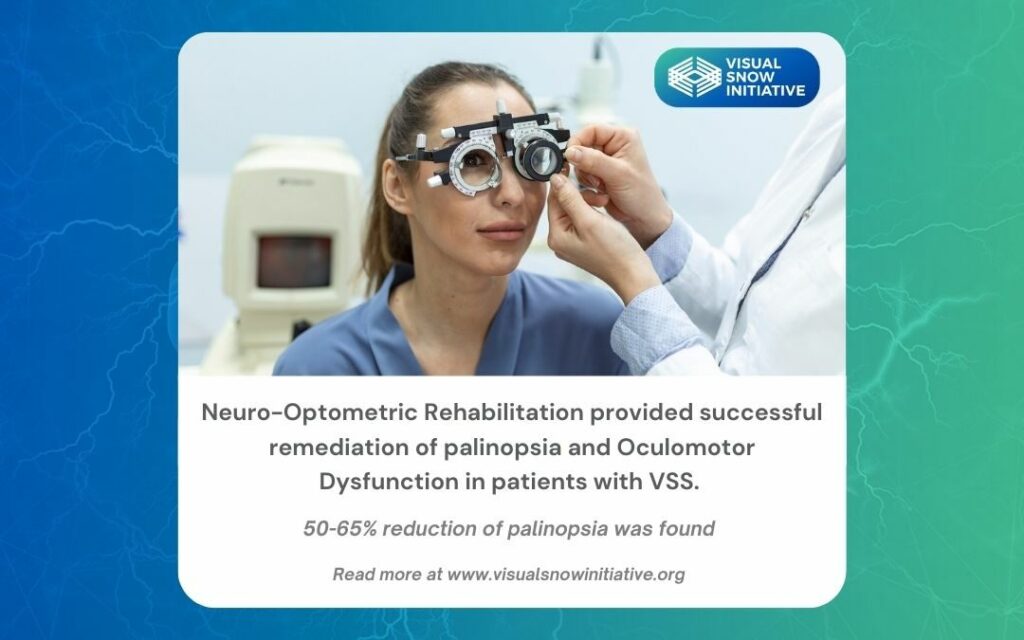Researchers
Barry Tannen, OD, FCOVD, FAAO, Jacob Brown, OD, Kenneth J. Ciuffreda, OD, PhD, FCOVD, FAAO, FARVO, Noah M. Tannen, OD, FCOVD, FAAO
Abstract
Visual Snow (VS) and the Visual Snow Syndrome (VSS) represent relatively new and important medical and neuro-optometric diagnoses.
While there is much information dealing with their defining characteristics and diagnosis, there is a relative paucity of information dealing with therapeutic intervention.
Methods: In the present investigation, a retrospective analysis of 27 patients (ages 9-55 years, mean of 28 years) with documented VSS was performed with respect to treatment of the visual snow, palinopsia, and the newly-discovered versional oculomotor dysfunctions in a private, optometric practice setting. Patients were provided a comprehensive neurooptometric and binocularvision examination, as well as completed the VSS Symptom Survey.
Treatment: They were given a selection of 5 BPI and FL-41 chromatic tints to assess using a simple clinical comparison protocol for the VS; they were provided a range of saccadic tests to remediate the common finding of palinopsia; and they were given optometric vision therapy to remediate the common, versional oculomotor problems.
Results: Chromatic filters were prescribed in 24 of the 27 patients for their VS, with symptom reduction of at least 50%. Reduction of the palinopsia by 50-65% was found in all 23 patients who had palinopsia following the saccadic therapy. 23 of the 27 were given oculomotor-based vision therapy for their versional deficits (i.e., OMD), and marked symptom reduction was reported in all.
Conclusion: This is the first study to demonstrate that neuro-optometric rehabilitation provided successful remediation of the problems of VS, palinopsia, and OMD in symptomatic,
clinical patients with VSS.
Introduction
The phenomenon of “visual snow” (VS) was likely first reported in 1944 as a side effect of the drug digitalis used for heart problems (1). The topic lay relatively dormant until 1995 (2) and over the past decade or so has experienced a revival of interest, primarily with respect to the development of specific diagnostic criteria and consideration of it as a “syndrome”, namely the “visual snow syndrome” (VSS) (3-5).
The primary visual symptom reported in those with VSS is VS, that is they see a pixelated overlay of “snow” encompassing the entire visual field, which could be either monochromatic or chromatic, and also either transient or constant, in nature.
Until recently, the treatment aspect has received relatively little attention. This has included the prescription of medications which has been unsuccessful, (8) simple discussion to allay the fears of such patients, (3)and recent case reports/case series involving neuro-optometric rehabilitation which has beensuccessful (6,7,9,10).
In the present paper, we report the results of a retrospective, clinical study in 27 patients diagnosed with VSS. It includes the use of specialized tints to reduce the perception of VS and related abnormal visual phenomena, and specific oculomotor-based paradigms to reduce the intensity of the palinopsia as well as to remediate the newly-uncovered versional eye movement deficits.
Table 1: The Neuro-Optometric Evaluation



